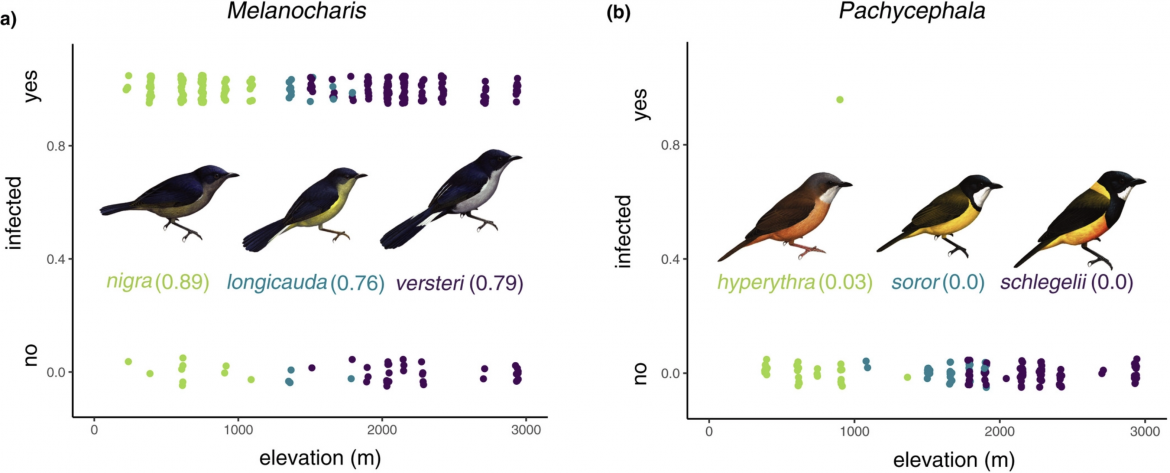
Figure 3 - Trios of Melanocharis berrypeckers (a) and Pachycephala whistlers (b) illustrate the strong phylogenetic signal in prevalence that characterizes our dataset. We plot infected versus uninfected samples for each species, and provide infection prevalence for each host species in parentheses. Infection prevalence are slightly higher in low-elevation species compared to high-elevation species, illustrating the minor negative effect of elevation on infection prevalence. Illustrations courtesy of Cornell Lab of Ornithology's Birds of the World.
Abstract
Aim: The biotic interactions hypothesis predicts that interactions between species are stronger at lower elevations compared to higher elevations. We tested whether this prediction is met by examining elevational patterns in avian haemosporidian infections in New Guinean birds.
Location: YUS Conservation Area, Papua New Guinea.
Taxon: Birds and haemosporidia.
Methods: We collected blood samples from 2268 individuals of 66 bird species along a reef-to-ridgetop tropical elevational gradient covering ~3000 m of elevation. We used molecular methods to screen samples for haemosporidian parasites, and sequenced 70% of positive infections to determine the identity of parasite genera. We fit a phylogenetic generalized mixed-effects model to test whether infection prevalence was higher at low elevations, as predicted by the biotic interactions hypothesis. Finally, we tested for phylogenetic signal in parasite prevalence and in host elevational distribution using Pagel's λ.
Results: Overall parasite prevalence was 45%. Infection prevalence decreased with elevation, though prevalence remained above ~30% even for high-elevation communities between 2000 and 3000 m. We found strong phylogenetic signal in infection prevalence, but no phylogenetic signal in host elevational distribution. Nearly all sequenced infections (97%) were of Haemoproteus.
Main Conclusions: Our results are consistent with predictions arising from the biotic interactions hypothesis. However, phylogenetic relationships among hosts are a much better predictor of infection prevalence than is elevational position: closely related bird species tend to have similar infection prevalence regardless of the elevations where they live.